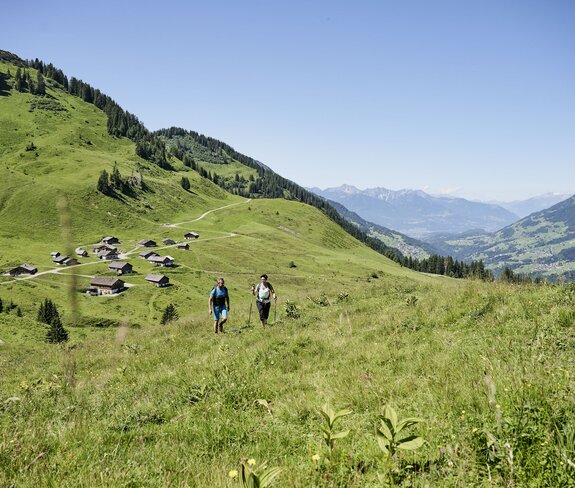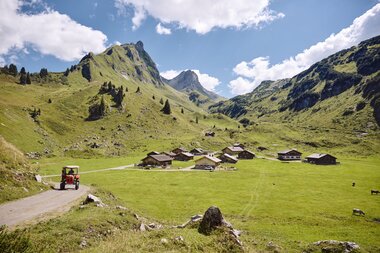
Bergsteigerdörfer "Mountaineering Villages of the Alps"
Back to the essentials
In a world that seems to be spinning faster and faster, the mountaineering villages offer a space where the pace slows down and nature takes center stage. These villages, spread across Austria, Germany, Slovenia, Italy and Switzerland, are not only retreats for those who love alpine mountaineering, but also for all those who strive for authenticity, sustainability and a deeper connection to nature in an increasingly noisy and accelerated world.
Movement under your own steam
In the mountaineering villages, the phrase "less is more" comes to life. The appeal of simplicity is central here. Instead of using cable cars or motorized transport to traverse nature, people in the mountaineering villages rely on the strength of their own legs and the rhythm of their breathing. This way of getting around not only promotes health, but also an appreciation of the alpine environment and its unspoiled beauty.
Here, the atmosphere is not determined by machines, but by human and animal presence.Local production and short transportation routes promote peace and quiet. Traditional alpine buildings and sustainable agriculture preserve the idyllic village landscape and create a backdrop that is enriched by natural sounds.
Enjoyment at a high level
In the mountaineering villages, enjoyment is a top priority: People take time not only to see the landscape, but also to taste and feel it. Mountain huts become more than just shelters; they are places of community and cultural exchange.
Stimulation without hectic
Communication is a top priority in the mountaineering villages, but in a way that avoids hectic and stress. The accessibility of the villages by public transport emphasizes the commitment to gentle tourism and enables an arrival that is already part of the recreation process. The small size of the accommodation establishments promotes an intensive but calm exchange between guests and hosts. This form of communication enriches the experience by providing deeper insights into the local culture and way of life.
Each of these villages, whether in Austria, Germany, Slovenia, Italy or Switzerland, is unique, but they all share the same vision: a world in which people and nature live together in respect and harmony.
Mountaineering village Großes Walsertal
The harmony between man and nature is exemplified in the Großes Walsertal, one of the first mountaineering villages to be recognized as a UNESCO biosphere park. The priority given to biodiversity and cultural heritage makes the valley an authentic place to experience and preserve Alpine beauty.
Read more:



